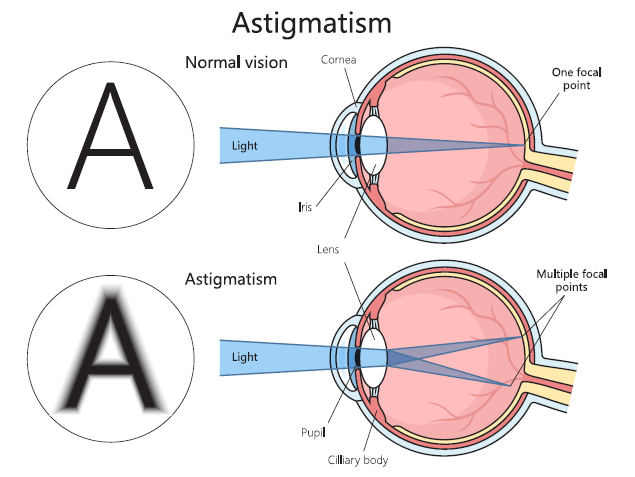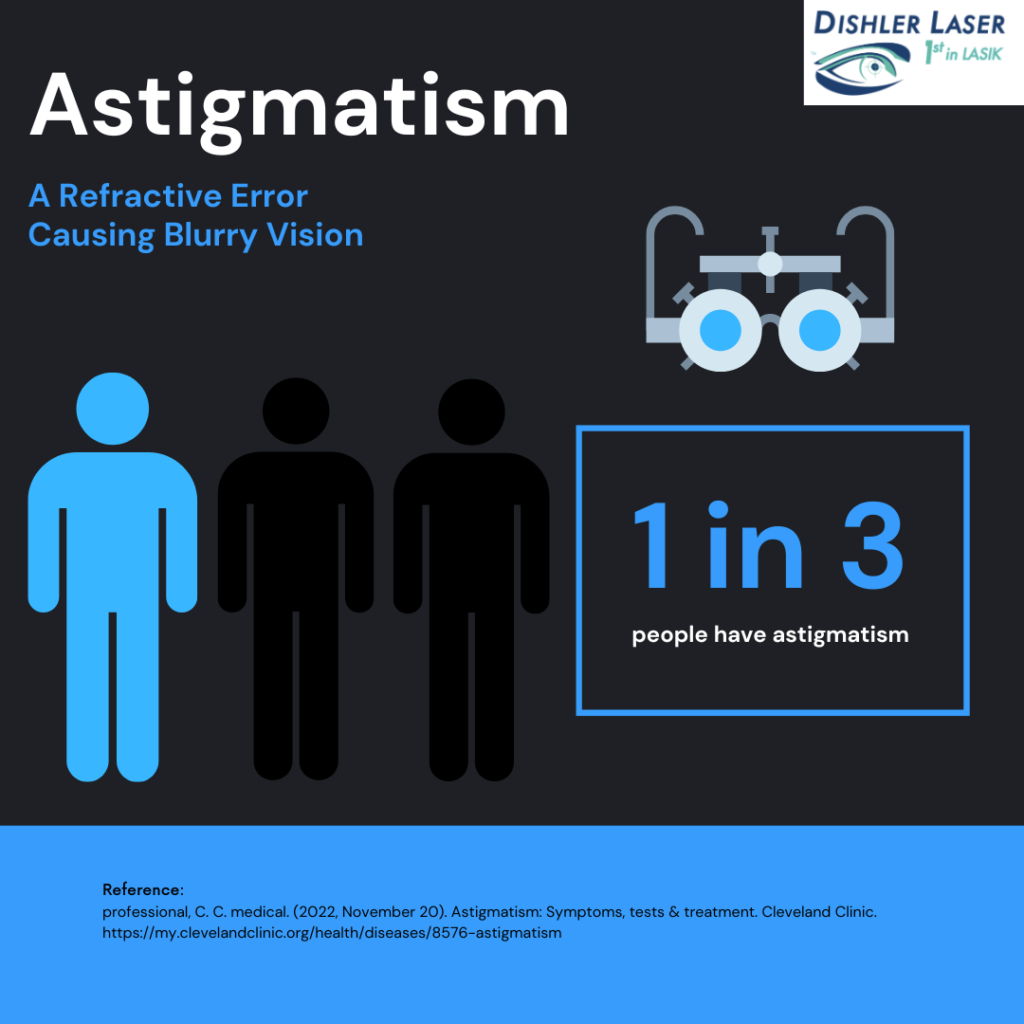Astigmatism Surgery Options: What You Need to Know in 2024
A common question we have regularly is- Can I get LASIK or PRK Surgery if I have astigmatism?
The short answer-YES!
What is Astigmatism?
Astigmatism occurs when the cornea or lens has an uneven curvature, causing light to focus on multiple points in the eye rather than a single point on the retina. Unlike nearsightedness (Myopia) or farsightedness (Hyperopia), Astigmatism results in blurred or distorted vision affecting near and far. Symptoms include headaches, eye strain, and difficulty seeing at night. Traditional corrective methods involve glasses or contact lenses designed to compensate for the irregular shape of the cornea.

What Type of Surgery Can I have if I have Astigmatism?
Several refractive surgical options are available to correct astigmatism:
Laser-Assisted in Situ Keratomileusis (LASIK):
- LASIK is the most popular refractive surgery for astigmatism.
- It involves creating a thin flap in the cornea, then reshaping the underlying corneal tissue with an excimer laser.
- This reshaping allows light to focus correctly on the retina, significantly improving vision.
Photorefractive Keratectomy (PRK):
- PRK is suitable for patients with thinner corneas.
- Instead of creating a flap, the surgeon removes the outer layer of the cornea and reshapes the underlying tissue with a laser.
- The corneal surface regenerates over time, resulting in improved vision.
Small Incision Lenticule Extraction (SMILE):
- SMILE is a minimally invasive procedure that creates a lenticule (a small disc of corneal tissue) using a femtosecond laser.
- The surgeon removes the lenticule through a small incision, altering the corneal shape to correct astigmatism.
The Surgical Process
Many patients with corneal irregularity shy away from asking if corneal refractive surgery is an option for them, but here at Dishler Laser Institute, we can treat a high degree of astigmatism. We can treat up to –6.00 diopters of corneal astigmatism, however most patients will have an average amount of astigmatism of –0.75 diopters which not corrected with contact lenses.
Mild astigmatism is typically defined as between 0.75 and 2 diopters. It is considered moderate when it ranges from 2 to 4 diopters and is categorized as significant or severe when it measures 4 diopters or higher.
Benefits
Refractive surgery offers many benefits for patients with this refractive error. One of the biggest advantages can include improvement of night vision, including a reduction of glares, halos, or starbursts. Patients who wear toric contact lenses to correct this vision issue can feel frustrated with the overall quality of vision they can achieve with lenses. Most brands of toric lenses do not offer the exact amount of astigmatism or axis needed for optimal correction. This along with the rotation of toric contacts can increase the occurrence of night vision issues. This can also result in fluctuating vision throughout the day. When correcting this type of refractive error with refractive surgery, the prescription can be fine-tuned for the exact amount of correction and the direction of toricity needed. This process involves using lasers to reshape your cornea precisely so light can hit your retina properly creating a more stable option.

Conclusion
Refractive surgery has revolutionized the treatment of astigmatism, offering patients a chance at clear, unaided vision. Advances in surgical techniques and technology continue to improve outcomes and safety. For individuals with astigmatism seeking a permanent solution, consulting with a qualified ophthalmologist is the first step towards a life free from the constraints of corrective lenses. Contact us today to see if you qualify or schedule your consult online!
